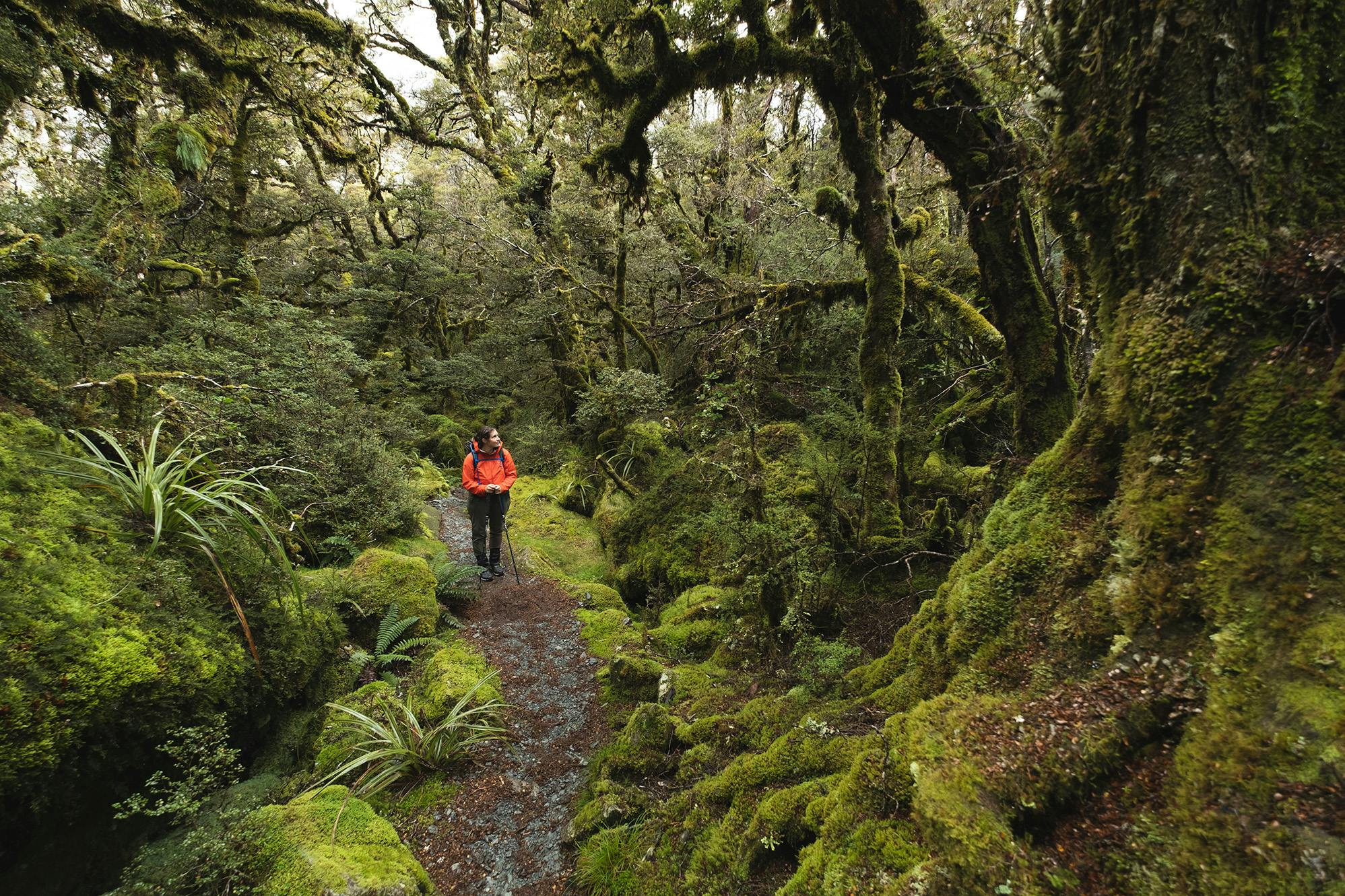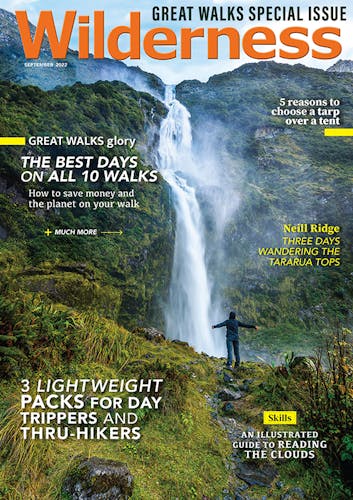It may be hard on the knees, but there are plenty of benefits to going on a tramping binge and tackling the Great Walks back-to-back.
Last Easter I enjoyed my first school holidays as a first-year teacher. There were 17 days to play with and I went overboard. I booked the Rees–Dart, Routeburn and Kepler tracks back-to-back with no rest days in between. This meant 11 consecutive days of tramping among some of Aotearoa’s most incredible scenery. It turned out to be the best tramping experience of my life and the greatest test yet for my body, stamina and gear. I came away inspired to tackle more of New Zealand’s iconic tracks back-to-back and figured there is no better place to start than the Great Walks. Here’s what I learned.
1. It’s better for the planet
Though it’s tougher than dehy to swallow, tramping the length and breadth of Aotearoa negatively impacts the environments we care about. Any form of powered track transport leaves a footprint. It’s an imperfect solution, but combining two Great Walks can effectively halve the carbon footprint of those trying to tick off every track. I combined the Routeburn and Kepler on one trip, and the Heaphy and Abel Tasman on another. Next, I hope to tick off the Hump Ridge and Rakiura tracks. It’s not going to solve the climate crisis, but it’s a mindset shift and, thanks to the geographical proximity of some walks, it’s logistically and economically rational.
After five days of pinch-yourself sunshine on the Rees–Dart, the weather packed a sad on the day we started the Routeburn. We started early and beat the worst of it, but more than 70mm of rain was forecast over a soggy three-hour period that evening. At Lake Mackenzie Hut the following night we learned that the weather had forced a road closure to Routeburn Shelter and no trampers had been able to start after us. We were fortunate to see our plan through, but I kept my expectations realistic. Had we been forced to change plans, we’d have had to accept the situation, adapt and move on – which, frankly, is a good mindset for any tramping.
2. It’s good for your wallet (in the long run)
Great Walks aren’t cheap – especially for those usually content with cheap and cheerful backcountry huts. Of course, booking two or more back-to-back is initially costlier, but savings can be made along the way, including on flights and track transport. Take the Routeburn and Kepler: track transporters will drop you at the Routeburn Shelter from Queenstown, where you walk 32km to The Divide. From there, it’s a short bus ride to Te Anau from where the Kepler can be completed before bussing back to Queenstown, creating a logical loop rather than out-and-back trips. Financially, it makes sense; time-wise, it reduces some hefty transport hours (namely, the three-hour drive from The Divide back to Queenstown).
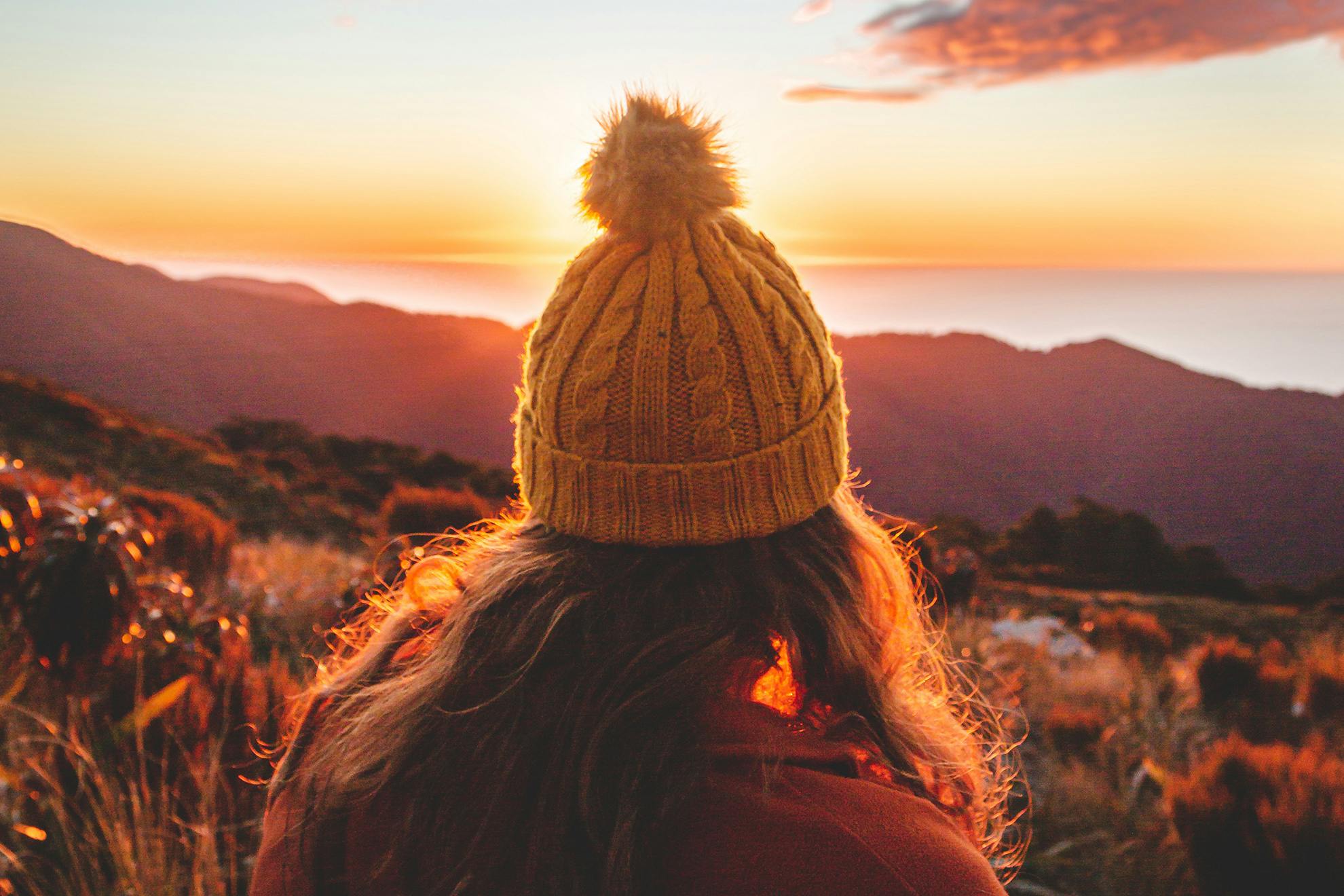
3. Your fitness improves
When expeditions are few and far between, day one on the track can humble mind and body. Deny your body any rest days, however, and you’ll be surprised at its resilience and capacity to repair, improve and power on. By day nine of walking, I was a warrior on the switchback ascent to Luxmore Hut. My group shaved hours off the DOC time (despite generous kai and manu stops) and still had plenty of pep left in the tank at the end. The rest of the track was a breeze. I felt I could have re-stocked in Queenstown and walked another 11 days. Back home, I weighed around 3kg less than pre-tramp and my fitness was the best in years. Though my hard-earned gains seemed to disappear as quickly as they had arrived, it was nice to feel like a force of nature for a few days.
4. You’re forced to pack well
Guilty of toting a coffee grinder and percolator on my back-to-back Heaphy and Abel Tasman track mission, I’m one who can’t resist carrying luxuries. The straw that finally lightened the camel’s pack was the prospect of lugging luxuries for 11 days straight and what that might do to my body. And so, for the first time in my tramping career, I channelled minimalist Marie Kondo and left behind everything that wouldn’t ‘spark joy’ for my joints. I tramped every day in the same merino shirt, ate dehydrated food, and substituted my lush hut pillow for my down jacket. Though I can’t verify it, I would wager my lighter-than-ever multi-day base weight was key to a seemingly miraculous avoidance of injuries, aches and pains. Did I miss my luxuries? Of course – but not as much as I enjoyed a pain-free tramping holiday.
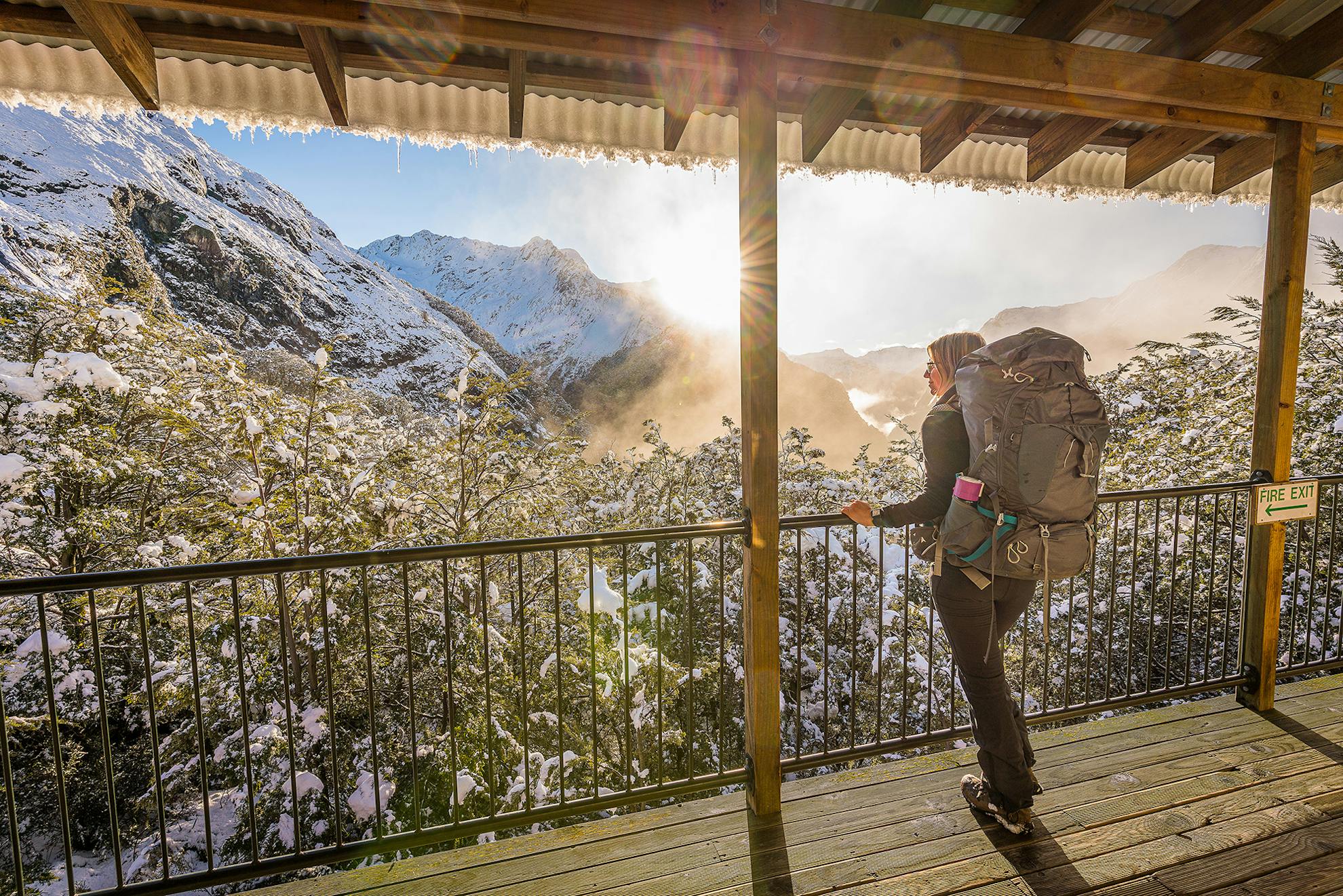
5. It’s a litmus test for longer journeys
I’ve long daydreamed of losing myself on Aotearoa’s longer routes (the Dusky Track, Rakiura’s Northwestern Circuit and possibly Te Araroa Trail) though I had never before walked for more than six consecutive days, and could only imagine how my body and sanity would fare on an 11-day trip. For months beforehand I was apprehensive of how my feet and knees would handle the demands, and whether my stamina would stand up to the challenge. The experience showed the importance of taking it one day at a time and focusing on nothing but the path at my feet. This mindfulness lessened the anxious wonderings of what I couldn’t control, whether that be future weather woes or injuries, and kept me in the present. Having now successfully walked for 11 consecutive days, my confidence in stepping out into long journeys has grown substantially.
6. You learn to be adaptable
After five days of pinch-yourself sunshine on the Rees–Dart, the weather packed a sad on the day we started the Routeburn. We started early and beat the worst of it, but more than 70mm of rain was forecast over a soggy three-hour period that evening. At Lake Mackenzie Hut the following night we learned that the weather had forced a road closure to Routeburn Shelter and no trampers had been able to start after us. We were fortunate to see our plan through, but I kept my expectations realistic. Had we been forced to change plans, we’d have had to accept the situation, adapt and move on – which, frankly, is a good mindset for any tramping.
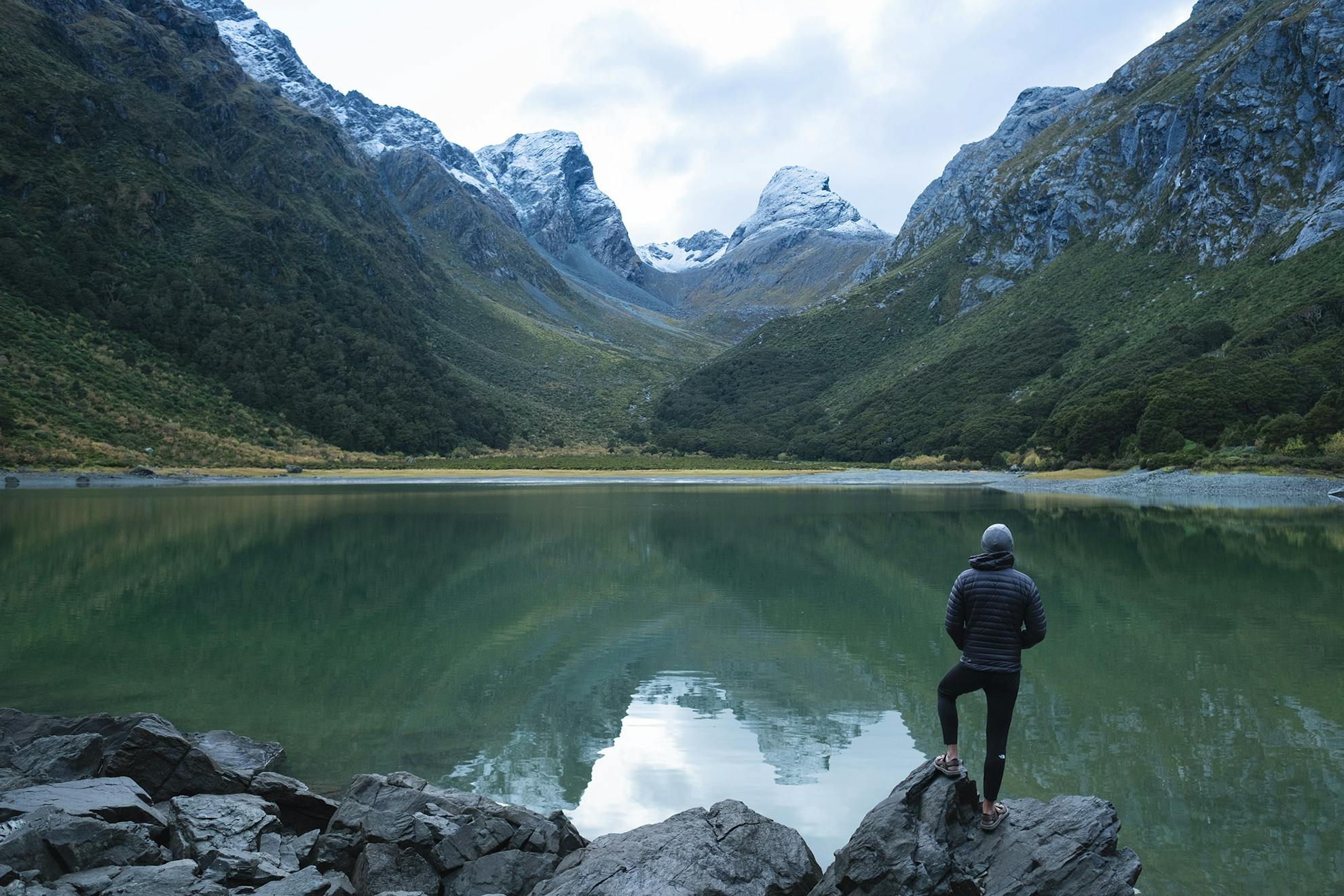
7. It’s a learning opportunity
I learn something on every tramp, whether it’s which dehy meals are worth forking out for or what gear is surplus to needs. One aspect of walking tracks back-to-back is the ability to learn from one and immediately apply those learnings to the next. After five days of dehydrated sludge on the Rees–Dart we realised we couldn’t go another six days without diverse dinners, so we threw our meal plan out and stocked up with fresh ingredients. I also discovered that one fun-sized Snickers bar per day was a despicably small amount of chocolate for any serious tramper! Because of our earlier mistakes, we landed feet-first on the Kepler Track with everything finely tuned and ready to go.
8. You can have too much of a good thing
The vast views of the Kepler didn’t hit as hard as they should have, but after coming off the back of the Routeburn and Rees–Dart tracks, it’s understandable that we had reached saturation point. We felt immeasurably lucky to be out in nature, but it was hard not to compare our present and past experiences, only days apart. In saying that, the Great Walks have been chosen for their diversity; every track has genuine points of difference. The Routeburn gave us granite slabs, mountain lakes and waterfalls, while the Kepler provided intimate experiences with kea, forests laden with moss and mushrooms, and perhaps the best ridge-walking of any Great Walk. If comparison is the thief of joy, then the appreciation and celebration of diversity is surely the antidote. On the Great Walks there is plenty to celebrate.
9. It puts you in the moment
Have you ever felt the haunting presence of Monday morning before the weekend is over? The realisation of the work week drives by at a hundred miles an hour, horn blaring, splashing a muddy puddle over a pleasant Sunday stroll. A weekend away is a wonderful remedy for Mondayitis, but often the frenzy of cramming an overnight tramp, drive times, unpacking and cleaning up into two or three days can be exhausting. A true holiday allows you time to wind down and ease into the break, long before thoughts of the coming Monday materialise. So extend your adventures, slow down, and live in the moment.





